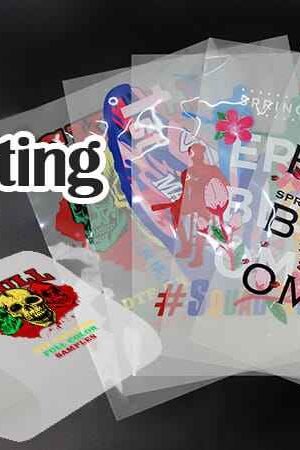What is Sublimation Printing?
Dye sublimation is gaining in popularity among crafters but what is sublimation printing? Sublimation printing allows you to transfer images to a shirt or another surface with great quality that will not fade over time. Imagine your craft projects sustaining their quality throughout the years. That is exciting, right?
What is sublimation?
Sublimation is a chemical process where a solid turns into a gas without going through a liquid stage.
What is sublimation printing?
Dye sublimation printing is a method for transferring images onto suitable material where the ink goes directly from a solid into a gas and infuses into your project.
Sublimation Printing Process
Typically a printer is used to print on sublimation transfer paper with sublimation ink. This paper is then exposed to high heat in a heat press in order to transfer the design to your surface or substrate. This is when the gas phase of sublimation printing occurs. The heat also helps to open the pores in your substrate. The particles that are now in a gas state can actually infuse themselves directly into the fibers of your surface. Once the heat is removed, the pores in the substrate will close. The ink then turns back into a solid and is permanently trapped inside.
What surfaces can you sublimate on?
As a general rule, sublimation printing is best used on products like polyester apparel in white or light colors. The higher the polyester fabric count, the better. Sublimation printing will not work on cotton shirts. You can also use it on hard surfaces but those must have a poly-coating. There are sublimation blanks (often called substrates) available in things like coasters, mugs, mousepads, cell phone cases, and so much more. The sublimation process itself needs a poly-coating or polyester surface for the reaction that takes place.
How is this different from t-shirt transfers, heat transfer vinyl or screen printing methods?
For t-shirt transfers that can be printed in a home printer, heat transfer vinyl, and screen printing, the material sits on top of the garment. The sublimation reaction actually allows for the ink to be embedded from the sublimation paper into the surface. The design doesn’t sit on top of your item the way the other methods do. There’s nothing wrong with using those, though! You can still make great products using HTV and transfers. However, by using sublimation printing, your design graphics won’t crack, peel, or fade over time. Overall, sublimation will be better quality and also a longer lasting product.
Cost Factors
The reason that methods like t-shirt transfers and HTV are so popular is simply that sublimation is expensive. The printer, software, ink, heat press, and substrates can really add up. It is usually way more than a home crafter is willing to spend. However, you can actually find sublimation prints you can purchase from places like Etsy. Then all you need is your substrate and heat press to make your own projects. This is a popular option for those that don’t want to invest but want to make a high-quality project at home.
Want another option? Try Cricut Infusible Ink which is a form of sublimation that is perfect for those that just want to give it a try!
NOTE: You will want to look at the heat press specs for any sublimation print you purchase as they often require temperatures up to 400 degrees Fahrenheit.



